ASRock X79 Extreme11 Review: PCIe 3.0 x16/x16/x16/x16 and LSI 8-Way SAS/SATA
by Ian Cutress on September 3, 2012 10:15 AM EST- Posted in
- Motherboards
- ASRock
- X79
- LSI
- PLX
Testing the LSI SAS 2308 PCIe Controller
As part of this review, ASRock were kind enough to provide a set of eight ADATA XPG SX910 256GB drives in order to test the LSI SAS/SATA ports on the motherboard. These drives are rated for 500 MBps+ sequential read and write speeds, and are based on the LSI SF-2281 controller. Due to the routing of the LSI chip via PCIe 3.0 lanes, our bandwidth ceiling is lifted as we do not have to go via the chipset.
The LSI SAS controller supports SAS2 and SATA 6 Gbps drives. This is in comparison to the C60x server based chipsets for Sandy Bridge-E and Xeon processors based on the 2011 socket, which allow for up to eight SAS/SATA drives limited to SATA 3 Gbps and chipset throughput.
The LSI controller allows for RAID 0, 1 and 10 only, which is a little odd. I would have expected some users to require RAID 5 or 6. Running eight drives in RAID 0 is a unique real world scenario, due to the fail rate potentially wiping all the data, but it does allow us to study peak throughput. Thus the preferred scenario here will be RAID 10 across eight drives, thus taking advantage of striping across 4 of the drives but also having them mirrored.
The LSI platform is very easy to use. With the drives plugged in and powered (I had to rummage for suitable power connectors), the LSI software provided (MegaRAID) on the ASRock Driver DVD is loaded and run. After a login screen, we are presented with the following:
In order to create array, we select the ‘Create Virtual Drive’ option. We then get an option to select either an Easy mode for creating the virtual drive, or an advanced mode. Both are very limited in their options, especially as we can only choose one stripe size – 64KB.
The virtual drive then needs to be mounted in Windows, using the Disk Management tool.
The LSI chip by default is set to run in PCIe 3.0 mode in the BIOS. There is also an option to allow booting from the LSI chip, via Port 7. This unfortunately adds a large amount of time to the booting of the system, around 40-50 more seconds.
With this in mind, we tested several scenarios for bandwidth and 4K performance with the LSI chip. As the LSI has no access to additional cache like a PCIe card, we will see that the peak performance lies more in bulk sequential transfers, rather than small transfers.
For the tests, we used the standard ATTO benchmark and the following scenarios in RAID-0:
LSI Chip with 1, 2, 3, 4, 5, 6, 7, 8 drives (listed as SAS x) via MegaRAID
Chipset with 1, 2 drives on SATA 6 Gbps (listed as x+0)
Chipset with 1, 2, 3, 4 drives on SATA 3 Gbps (listed as (0+x)
Chipset with 1 drive on SATA 6 Gbps and 1, 2, 3, 4 drives on SATA 3 Gbps (listed as 1+x)
Chipset with 2 drives on SATA 6 Gbps and 1, 2, 3, 4 drives on SATA 3 Gbps (listed as 2+x)
All chipset scenarios were set using the RAID from BIOS rather than in the OS.
In terms of peak speeds using ATTO, we recorded the following results:

There are plenty of conclusions to draw from this – for peak throughput, the LSI ports are preferred. When using the chipset connections, going from 2+0 to 2+1 will bring a drop in performance. Also worthy of note is our top speed with eight drives in RAID-0 – we hit 4.0 GBps read and 3.72 GBps write. We can see more by looking at how the chipset deals with reads and writes differently to the LSI chip:
In terms of write speeds, all the drive configurations perform nearly the same until the advantage of more drives takes over, and the LSI configurations of 3+ pull ahead. However, in the read speeds, all the chipset configurations that feature at least one SATA 6 Gbps drive have distinctly better read speeds below 64 KB transfer size. This could be due to some chipset caching or clever manipulation of the data. Thus for standard OS drives, putting two drives on the chipset SATA 6 Gbps ports will be more beneficial than using the LSI chip.
In terms of scaling, the LSI chip has the following 3D surfaces for read and write:
In both read and write, we only see any relevant scaling of drives beyond 128KB transfers. The large the transfer, the more the scaling becomes almost 1:1 as more drives are added.
Ultimately though, this may not be the best use case scenario for the product. As mentioned above, perhaps an eight drive RAID 10 array could be utilized with SAS drives, whereby the drive is more relevant to the speed than the port is (despite ASRock advertising stating peak throughputs).



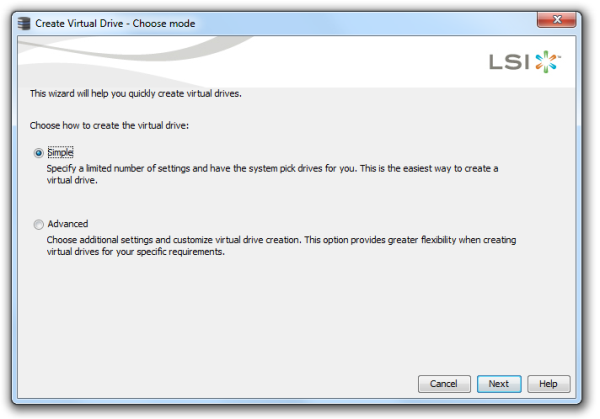

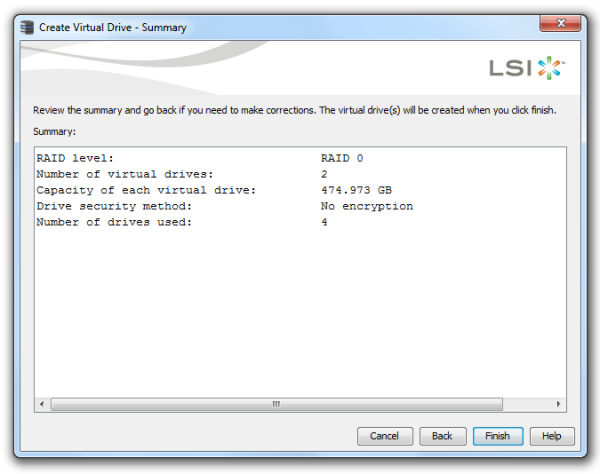
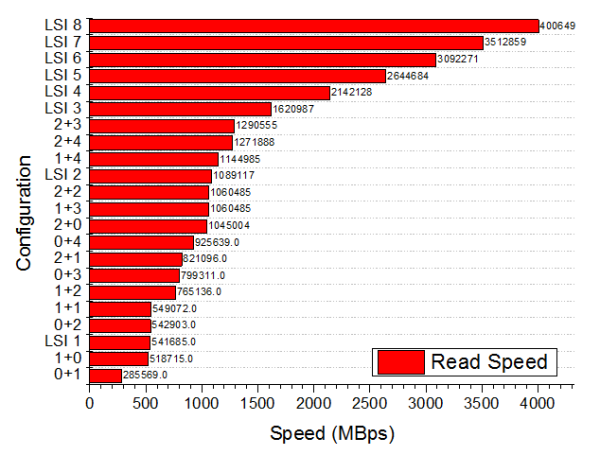
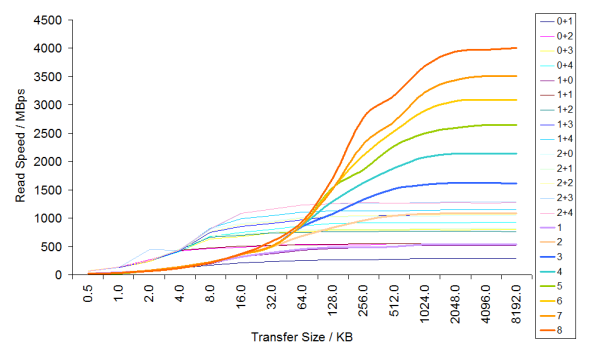
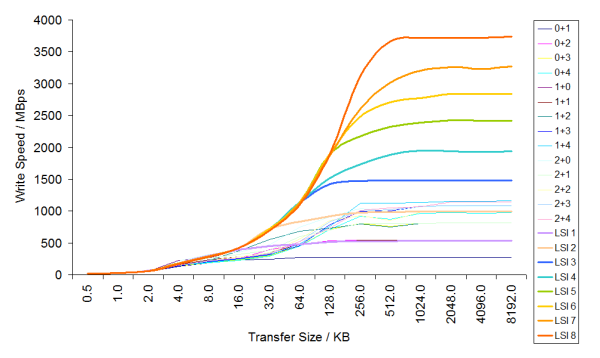
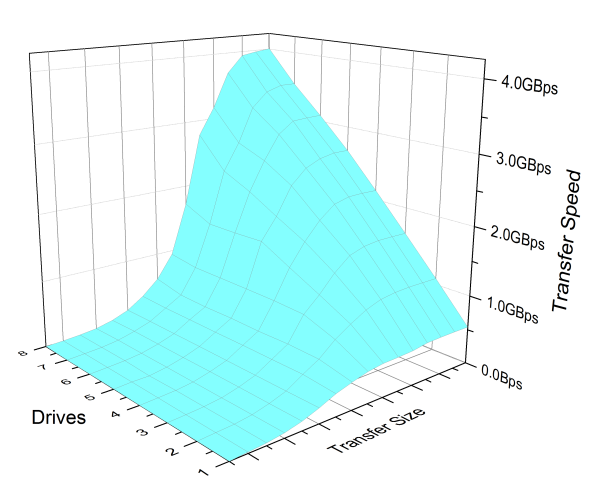
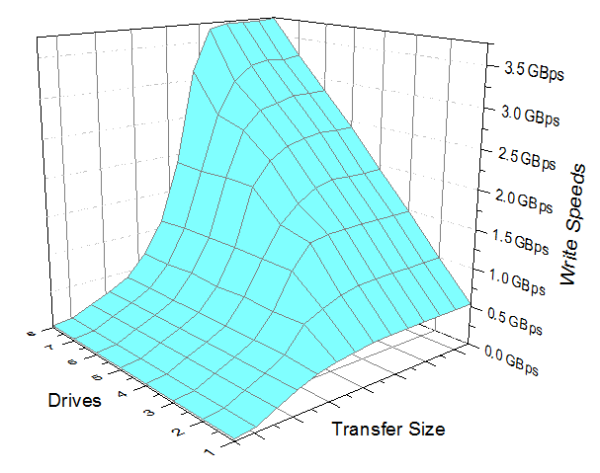








62 Comments
View All Comments
cjs150 - Tuesday, September 4, 2012 - link
All those right angled, stacked SATA connectors and the 24 pin ATX connector is still sticking straight up!Come on, it costs little to make this a right angled connector and makes for much better cable management (especially if you are also using all the SATA connectors)
Has anyone checked the accuracy of the ASRock Hardware monitor for temperatures? There are reports that on other ASRock board these are significantly inaccurate.
Ultimately other than M/B p#rn not really sure what market this board is aimed at. For a workstation I would prefer dual CPUs and 48 PCI lanes
dgingeri - Tuesday, September 4, 2012 - link
I think that LSI 2308 chip is the same as the chip used in Dell's PERC H310 controller, with slightly different firmware/bios. (Dell customizes theirs to call it a PERC and label it as a Dell controller, but it is still labeled as a LSI copyright.) If so, that's a very good controller, from my experience.ComputerGuy2006 - Tuesday, September 4, 2012 - link
I want Ivy Bridge-E, not going to go from 1336 setup to x79 setup without knowing if ivy-e is even coming out (much less if it will work on the same mobo)dgingeri - Tuesday, September 4, 2012 - link
With AMD providing absolutely no competition in this space, I would say it is unlikely they'll come out with any updates worthy of spending money. Think of the time with the P4 while AMD wasn't providing competition. Intel put out processors from 2.8 to 3.8GHz over the course of 2 years which cost more and gobbled up more electricity, yet provided minimal performance enhancement. (iirc, the 3.8GHz chip was only about 10% faster than the 2.8GHz chip because of memory bandwidth limitations and thermal throttling, yet Intel charged more than double the intro price than the 2.8GHz for the 3.8GHz chip.) Intel without competition is just a money hog, gobbling up more and more money with little to show for it. I doubt Haswell with be anything special, either. IB certainly isn't.Oh, yeah, they say Haswell will be 10% faster than IB at the same clock rate. While AMD was providing competition, they were putting out things that ran 50-60% faster per clock, and had faster clock rates to boot. So, at the price point, we'd get a 75-100% boost per generation. (Core 2 had a drop in clock rate, sure, but it was WAY faster than the P4, giving us a 80%+ performance boost at the same clock rate. Coppermine was a huge boost in both clock rate and efficiency. Katmai was a huge boost in clock rate and efficiency. Same with Klamath and Deschutes. Yet, the P4 generation was a huge stall point, and also the point where most of Intel competitors got out of the race and AMD was way behind.)
I wish someone would come into the market and provide an little incentive to get Intel to move their butts forward, but we're not going to see that for probably another decade.
Master_shake_ - Tuesday, September 4, 2012 - link
problem is Intel won't allow any more companies to get the x86 license to make desktop/notebook cpus.i want Nvidia to make one just to have a 3rd choice.
fteoath64 - Thursday, September 6, 2012 - link
"i want Nvidia to make one just to have a 3rd choice.".Yeah, then Nvidia buys VIA and starts making NV-nano as the Tegra3 of x86 for the super tablets that would be weight compatible with current 10.1 Android/iOS tablet ..... {pipe dream ...}
Nvidia doing a x86 and ARM hybrid processor would be really cool for a new generation of UltraBooks that does Win8 and Android together. Imagine when docked you have both Win8 (external monitor) and ICS/JB on tablet with touch. Win8 tablets being much thicker plas plenty of space for 2 SDcard slots and 2 MicroSD slots.
fteoath64 - Saturday, July 12, 2014 - link
When the discrete gpu market for high-end notebooks dries up, then Nvidia might make a VIA play. For now, they cannot afford such an investment especially when they had sunk millions on Denver (Arm V8) 64-bit arm with the K1. IF they produce a great Arm 64bit core, then they might have a great chance on the tablet and high-end mobile market. Also, left over for the low-end and microserver market.Frallan - Wednesday, September 5, 2012 - link
I was complaining the other day about AT becoming an iSite talking more about iWare than anything else.My honesty compels me to write in after the last few days and apologize. There has been a number of good interesting computer and component articles the last week that proved me wrong.
Thank you AT and keep the good work up.
BlueReason - Wednesday, September 5, 2012 - link
"ASRock have potentially missed a trick here"It's becoming trendy for American-based tech blogs to use the British standard for subject/verb agreement when it comes to businesses. You could debate what it ought to be all day, but American professional writing standards dictate that companies be referred to as a singular entity. You can do whatever you like, of course, but just an fyi in case you submit a piece to a major American publication. They won't see your usage as fancy.
Razorbak86 - Monday, September 24, 2012 - link
"Lighten up, Francis." -- Sergeant Hulka, Stripes (1981).Although you may view Ian Cutress' prose as "fancy", he was hardly being pretentious. He lives in London, and he was educated at the University of Oxford. That might not mean much to you, but feel free to Google a map or two and educate yourself about world geography.
I lived and worked in the United Kingdom for 5 years as an American expatriate. My daughter was born in Aberdeen, Scotland, and my kids grew up with British accents. I can assure you that it is standard practice in the United Kingdom to refer to companies in the plural. Fortunately for me, the British people were very gracious hosts. Despite the subtle differences between my American dialect and the Queen's English, they always treated me and my family with great respect throughout our stay.
So please be a little more polite when referring to one of the Senior Editors of AnandTech. You are, after all, communicating in HIS native tongue, not yours. ;-p